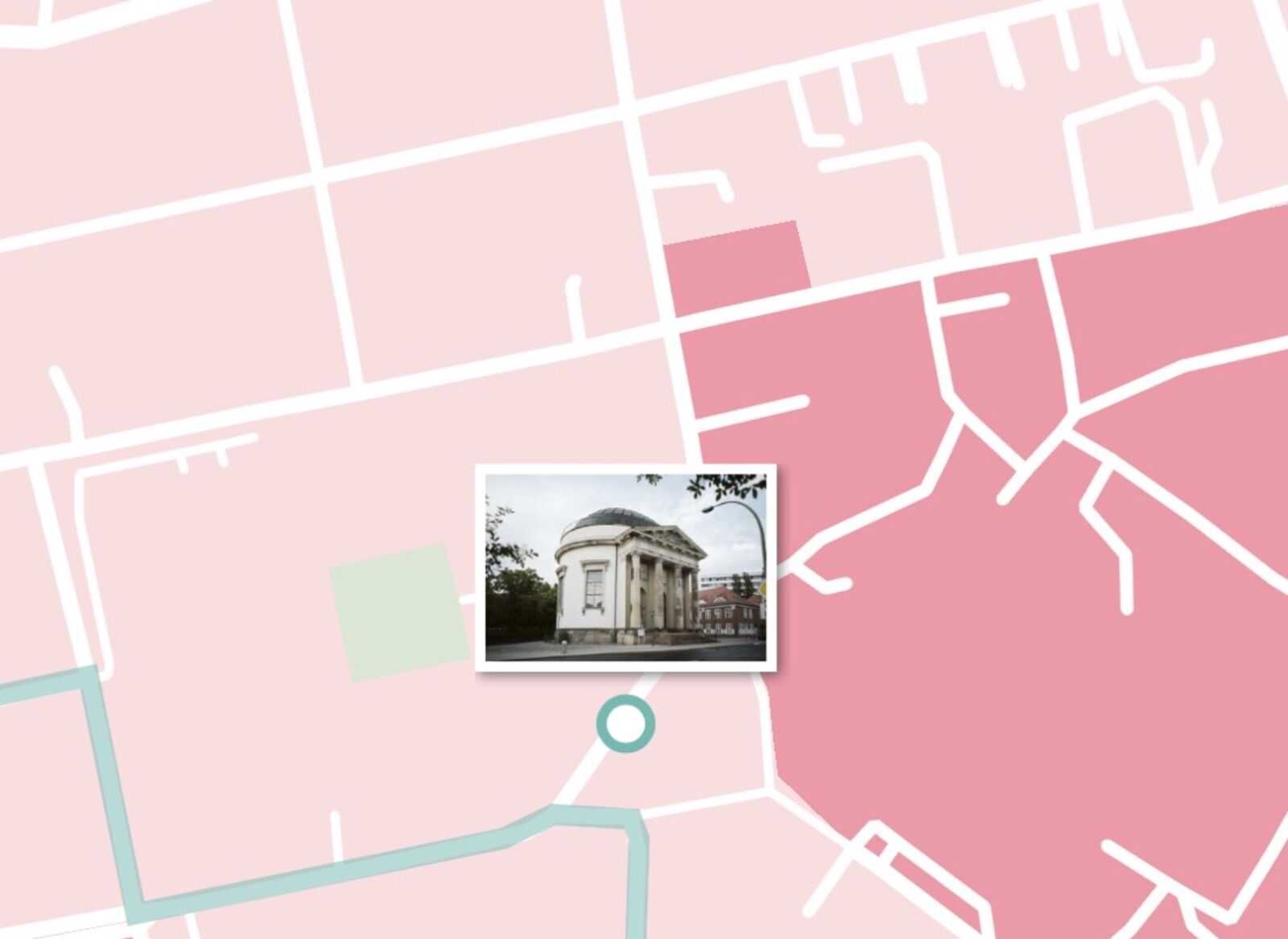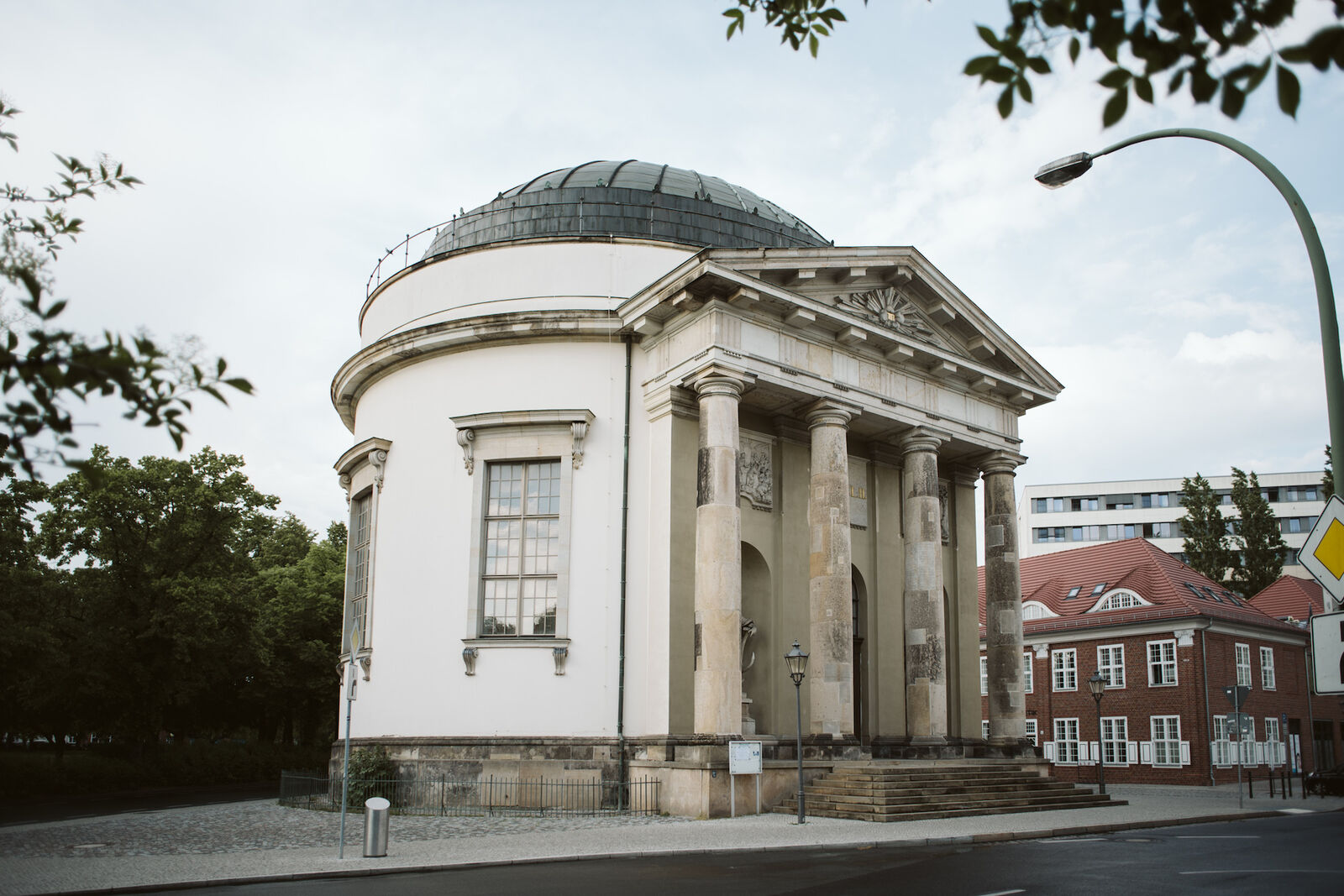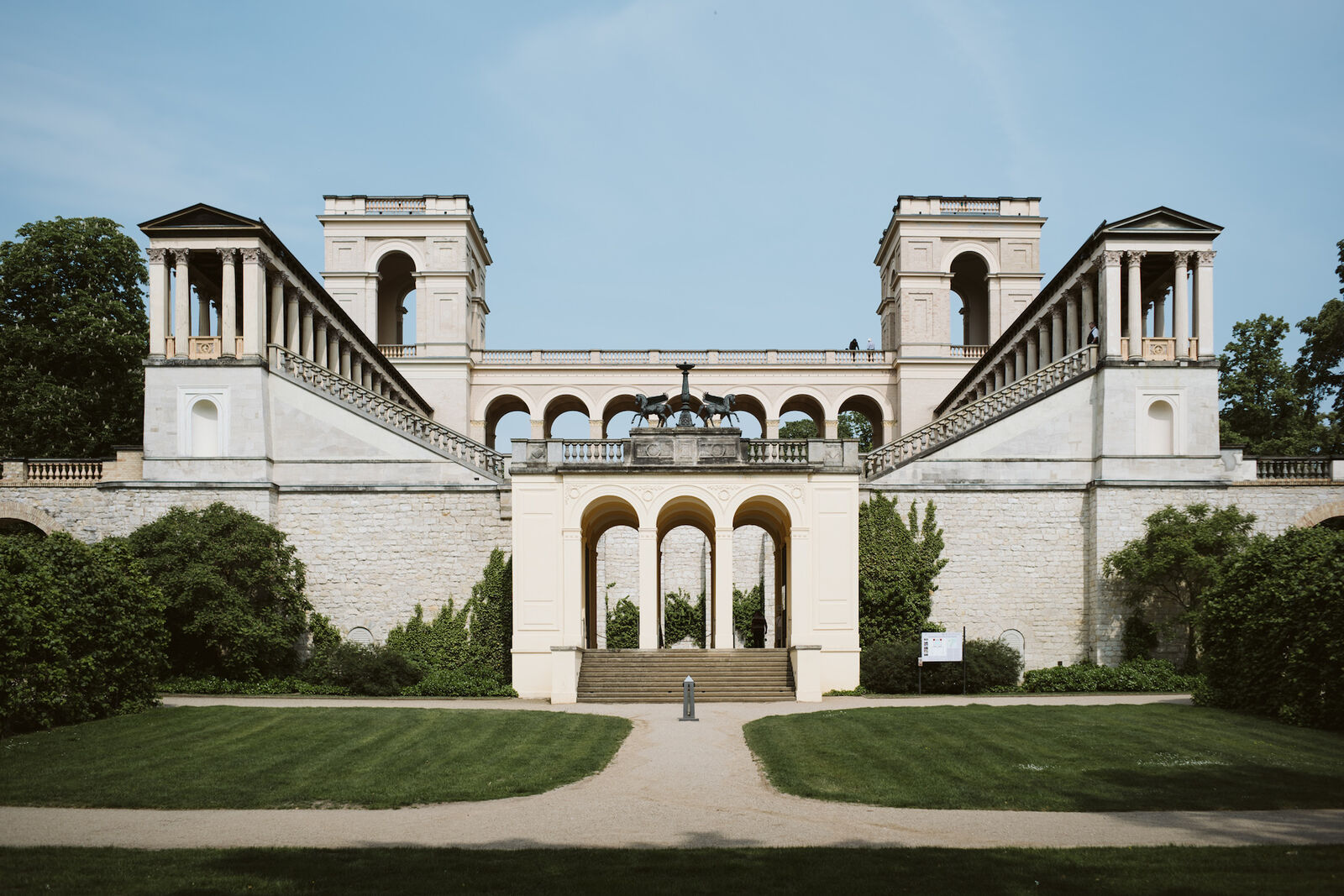
French Church / Pantheon
The French Church is a very special house of worship in every way. The Pantheon in Rome, the temple of all the gods, was the inspiration for it. Admittedly, the Potsdam church seems like a miniature version of its Roman prototype, adapted to the dimensions of the Prussian royal city. Its front side, with its four Roman Doric columns, which support a triangular gable, looks like an ancient temple. Behind it rises an oval rotunda with a copper-clad dome.

Henry Balaszeskul
French Church, Potsdam
Vom Tempel zur Kirche
The Romans called their monumental Pantheon “La Rotonda” because of its interior. It's laid out so that a huge roofed sphere with a diameter of more than 43 metres could fit inside it. To this day the building is considered one of the outstanding examples of ancient architecture. Until the Industrial Revolution it had the world's biggest dome, and it's one of the best-preserved structures from Roman antiquity. First erected as a temple in the second century AD on the Roman Campus Martius, it was consecrated as a Christian church in the seventh century.
A gift to the French community
The Potsdam church modelled on this icon of ancient architecture was designed by the royal architect Georg Wenzeslaus von Knobelsdorff in 1751. Construction was in the hands of Jan Boumann. The conversion of a temple for all the gods into a church fit well with Frederick's enlightened views. With it he underlined that in his Prussia, people should all seek heaven in their own fashion.
It's the only church Frederick the Great had built in Potsdam – his gift to the French Protestant community, with which he maintained close ties. But the building is no affirmation of faith on Frederick's part. Sober economic considerations were his motive: the King wanted to bind the Huguenot religious refugees more closely to Prussia: "They helped repopulate our desolate towns and provided the factories we lacked".
The French Church is one of the stops on the audio tour Italy in Potsdam, which was developed as a city tour for the Barberini App on the occasion of the exhibition Baroque Pathways (13.7.-6.10.2019). The tour, narrated by TV host Günther Jauch, invites visitors to discover 30 buildings and works of art around the Museum Barberini that were created in the 18th and 19th centuries based on Italian models. Download the Barberini App and let yourself be surprised by the many Italian facets of this city.






